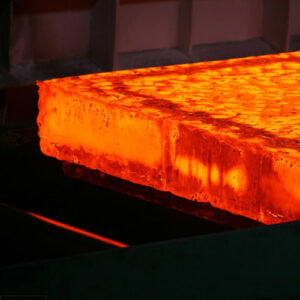Introduction
In the intricate world of manufacturing, the choice of materials can be the difference between success and failure. One such material that holds a pivotal role in various manufacturing processes is hot work tool steel. Renowned for its exceptional heat resistance, durability, and versatility, hot work tool steel is a cornerstone of industries such as die casting, forging, and extrusion. In this in-depth exploration, we will unravel the multifaceted reasons why hot work tool steel is absolutely essential in modern manufacturing.
Understanding Hot Work Tool Steel<a name=”understanding-hot-work-tool-steel“
Hot work tool steel is a category of high-alloy steel meticulously engineered to withstand extreme temperatures and mechanical stresses during hot forming processes. It’s the material of choice in industries where precision, durability, and performance under high-temperature conditions are paramount.
The Heat Resistance Factor<a name=”heat-resistance-factor”
1. Extreme Heat Tolerance
The defining characteristic of hot work tool steel is its extraordinary heat resistance. It can endure temperatures well beyond 1000°C (1832°F) without compromising its mechanical properties. This is an absolute necessity in manufacturing processes that involve intense heat.
Wear and Tear: The Challenge in Manufacturing<a name=”wear-and-tear-challenge”
2. Unyielding Wear Resistance
In manufacturing, tools and dies face relentless wear and tear due to their exposure to hot metals and alloys. Hot work tool steel shines in this regard with its exceptional wear resistance. This not only extends the lifespan of these crucial tools but also substantially reduces maintenance costs.
Toughness: Withstanding the Harshest Conditions<a name=”toughness-harshest-conditions”
3. Resilient Toughness
Beyond heat resistance and wear resistance, hot work tool steel demonstrates remarkable toughness. This inherent toughness prevents tools and dies from succumbing to the harsh conditions they encounter, ensuring longevity and reliability.
Dimensional Stability: Precision at Its Core<a name=”dimensional-stability-precision”
4. Unwavering Dimensional Stability
Precision is non-negotiable in manufacturing, and hot work tool steel delivers with its unwavering dimensional stability, even when subjected to elevated temperatures. This ensures that manufactured products adhere to strict tolerances.
Corrosion Resistance: A Bonus in Hostile Environments<a name=”corrosion-resistance-bonus”
5. Protection Against Corrosion
While not its primary attribute, hot work tool steel can be tailored to exhibit corrosion resistance. This feature proves invaluable in applications where exposure to corrosive agents is a concern.
Machinability: Shaping the Future<a name=”machinability-future”
6. Ease of Machinability
The versatility of hot work tool steel extends to its machinability. It can be precisely machined into intricate shapes and forms, making it a versatile choice for various manufacturing processes.
Hot Work Tool Steel in Action<a name=”hot-work-tool-steel-in-action”
7. Wide-Ranging Applications
The applications of hot work tool steel span across a multitude of industries, including:
- Die Casting: Vital in the die casting process, where hot work tool steel molds withstand high temperatures and maintain dimensional accuracy.
- Forging: Utilized in forging dies and punches, hot work tool steel thrives in environments requiring high toughness and heat resistance.
- Extrusion: An essential component in extrusion dies, which produce everything from aluminum profiles to plastic sheets.
- Hot Work Tools: Beyond specific industries, hot work tool steel is employed in various hot work tools like hot shears and hot extrusion tools.
Frequently Asked Questions<a name=”frequently-asked-questions”
1. Is hot work tool steel the same as high-speed steel?
Hot work tool steel and high-speed steel are distinct categories of steel. Hot work tool steel is tailored for applications that require high-temperature resistance, while high-speed steel is primarily used for cutting tools and drill bits due to its high hardness and wear resistance.
2. Can hot work tool steel be welded?
Yes, hot work tool steel can be welded, although the process can be challenging due to its high alloy content. Welding should be conducted by skilled professionals using appropriate techniques and consumables to maintain the integrity of the tool steel.
3. Are there safety precautions when working with hot work tool steel?
Safety is paramount when handling hot work tool steel, given its exposure to high temperatures and potential hazards. Adequate protective gear, including heat-resistant clothing and eye protection, should be worn. Workers should also receive proper training in safe handling practices to minimize risks.
4. What are some common grades of hot work tool steel?
Common grades of hot work tool steel include H13, H11, and H21. Each grade possesses a unique combination of properties suited for specific applications. The choice of grade depends on factors such as the type of hot work, operating temperatures, and tool design.
5. Can hot work tool steel be heat-treated for enhanced hardness?
Absolutely. Hot work tool steel can undergo heat treatment processes like hardening and tempering to augment its hardness and other mechanical properties. The specific heat treatment process depends on the particular grade of hot work tool steel and the desired end properties.
Conclusion<a name=”conclusion”
Hot work tool steel is the unsung hero of manufacturing, silently driving precision, durability, and reliability across industries. Its unparalleled combination of heat resistance, wear resistance, toughness, dimensional stability, and machinability makes it indispensable in the creation of products that shape our world. Understanding the pivotal role of hot work tool steel is crucial for making informed choices in manufacturing processes, whether in die casting, forging, extrusion, or any hot work application. In essence, hot work tool steel is the backbone of modern manufacturing, standing strong under the relentless heat of progress.

